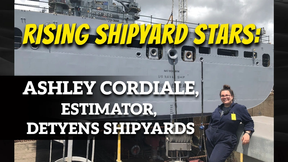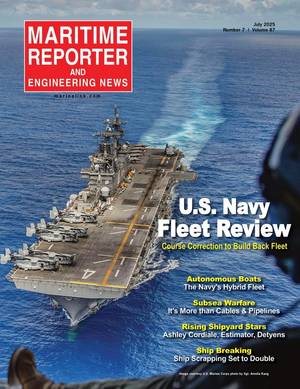Alternative Fuels in Marine Propulsion: A Technical Overview
The maritime industry is undergoing a significant transformation as it seeks to reduce its environmental impact and comply with increasingly stringent regulations on emissions. One of the most promising avenues for achieving these goals is the adoption of alternative fuels in marine propulsion systems. These fuels, including liquefied natural gas (LNG), biofuels, hydrogen, and ammonia, offer various benefits and challenges that are reshaping the future of marine propulsion. This article provides a technical overview of the key alternative fuels currently being explored and their implications for the maritime industry.
1. Liquefied Natural Gas (LNG)
Properties and Benefits
Liquefied natural gas (LNG) is natural gas that has been cooled to a liquid state, at about -162°C, for storage and transportation. LNG is composed primarily of methane (CH4) and is considered a cleaner alternative to conventional marine fuels such as heavy fuel oil (HFO) and marine diesel oil (MDO).
- Lower Emissions: LNG combustion produces significantly lower emissions of sulfur oxides (SOx), nitrogen oxides (NOx), and particulate matter (PM). It also reduces carbon dioxide (CO2) emissions by approximately 20-25% compared to traditional fuels.
- Energy Density: LNG has a higher energy density than compressed natural gas (CNG), allowing for more energy storage in a smaller volume, which is crucial for long voyages.
Challenges
- Cryogenic Storage: LNG must be stored in cryogenic tanks, which require sophisticated insulation and handling systems to maintain the low temperatures necessary for keeping the gas in liquid form.
- Methane Slip: One of the technical challenges associated with LNG is methane slip, where unburned methane, a potent greenhouse gas, escapes into the atmosphere during combustion or refueling.
- Infrastructure: The adoption of LNG is limited by the availability of bunkering infrastructure. While LNG bunkering facilities are expanding, they are still not as widespread as conventional fuel depots.
2. Biofuels
Properties and Benefits
Biofuels are produced from organic materials, such as vegetable oils, animal fats, and waste biomass. They can be used as a direct replacement or blend with conventional marine fuels.
- Carbon Neutrality: Biofuels are considered carbon-neutral because the CO2 emitted during combustion is offset by the CO2 absorbed by the plants during their growth cycle.
- Compatibility: Biofuels can be used in existing marine engines with minimal modifications, making them an attractive option for retrofitting existing vessels.
Challenges
- Feedstock Availability: The production of biofuels depends on the availability of feedstocks, which can be limited by competition with food production and other land uses.
- Energy Density: Biofuels typically have a lower energy density than traditional marine fuels, requiring larger volumes to achieve the same range.
- Lifecycle Emissions: While biofuels are considered carbon-neutral, their overall environmental impact depends on the entire lifecycle, including cultivation, processing, and transportation of the feedstock.
3. Hydrogen
Properties and Benefits
Hydrogen is a zero-emission fuel that can be used in fuel cells or internal combustion engines. When used in fuel cells, hydrogen combines with oxygen to produce electricity, with water vapor as the only byproduct.
- Zero Emissions: Hydrogen combustion produces no CO2, SOx, or PM, making it an ideal fuel for reducing the environmental footprint of shipping.
- Energy Efficiency: Hydrogen fuel cells are highly efficient, converting chemical energy directly into electrical energy with efficiencies exceeding 60%.
Challenges
- Storage and Distribution: Hydrogen has a very low volumetric energy density, requiring high-pressure tanks or cryogenic storage to achieve sufficient energy density for marine applications.
- Production: Most hydrogen is currently produced from natural gas through steam methane reforming (SMR), which emits CO2. Green hydrogen, produced via electrolysis using renewable energy, is more sustainable but currently more expensive.
- Infrastructure: Similar to LNG, the lack of widespread hydrogen bunkering infrastructure presents a significant hurdle to its adoption.
4. Ammonia
Properties and Benefits
Ammonia (NH3) is a carbon-free fuel that can be synthesized from nitrogen and hydrogen. It can be used in internal combustion engines or fuel cells.
- Zero Carbon Emissions: Ammonia combustion produces nitrogen and water vapor, with no CO2 emissions. This makes it an attractive option for meeting future decarbonization targets.
- Storage and Handling: Ammonia is easier to store and transport than hydrogen, as it can be stored as a liquid at relatively low pressures and temperatures.
Challenges
- Toxicity: Ammonia is highly toxic and poses significant health and safety risks if not handled properly. This requires specialized handling procedures and safety protocols.
- Combustion Characteristics: Ammonia has a lower energy density and different combustion characteristics than conventional fuels, requiring engine modifications and optimization to ensure efficient operation.
- NOx Emissions: While ammonia combustion does not produce CO2, it can generate nitrogen oxides (NOx), which are harmful pollutants. Effective NOx control measures are necessary to mitigate this issue.
5. Methanol
Properties and Benefits
Methanol (CH3OH) is a liquid alcohol that can be produced from natural gas, coal, biomass, or captured CO2 and renewable electricity.
- Ease of Storage: Methanol is a liquid at ambient temperature and pressure, making it easy to store, handle, and transport using existing infrastructure.
- Lower Emissions: Methanol combustion results in lower emissions of SOx, NOx, and PM compared to conventional marine fuels. It also offers the potential for carbon-neutral operation if produced from renewable sources.
Challenges
- Energy Density: Methanol has a lower energy density than traditional marine fuels, which means ships must carry larger quantities to achieve the same range.
- Corrosiveness: Methanol is corrosive to certain metals and requires compatible materials in storage tanks, fuel lines, and engines.
The adoption of alternative fuels in marine propulsion is essential for the maritime industry to meet future environmental regulations and reduce its carbon footprint. Each alternative fuel presents unique benefits and challenges, and the choice of fuel will depend on various factors, including the type of vessel, operating conditions, and availability of bunkering infrastructure.
As the industry continues to innovate and adapt, a combination of alternative fuels may emerge as the optimal solution for different segments of the maritime sector. The transition to these fuels will require significant investment in new technologies, infrastructure, and safety protocols. However, the potential benefits in terms of environmental sustainability and compliance with global emissions standards make this a critical area of focus for the future of marine propulsion.

















